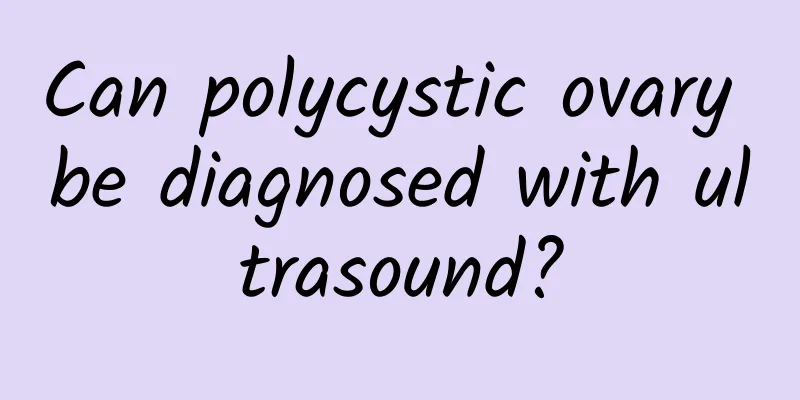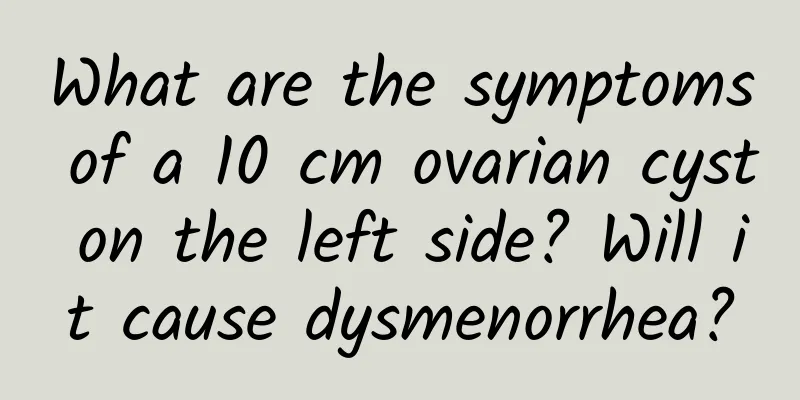Can polycystic ovary be diagnosed with ultrasound?

|
Polycystic ovary is a very harmful gynecological disease, also known as polycystic ovary syndrome, which will cause a series of changes in women's bodies and cause infertility, so we should pay attention to this disease. If the patient suspects that he has this disease, he should go to the hospital for examination in time, diagnose the disease as soon as possible, and then take appropriate measures for treatment to avoid delays in the disease. Although polycystic ovary is a very common disease in life and has a very high incidence rate, most people do not have sufficient medical knowledge, so they often do not know how to check for this disease and whether polycystic ovary can be diagnosed with B-ultrasound. In daily life, we should learn more about this condition and understand the correct examination methods, which will be of great help in diagnosing the disease as soon as possible. So can polycystic ovary syndrome be diagnosed with B-ultrasound? If a woman has polycystic ovary syndrome, then during the B-ultrasound examination, we can find that there are more than 12 follicles in both ovaries, and the volume of the ovaries will also increase, so for this symptom, we can use B-ultrasound. In addition, this disease can also cause hyperandrogenism in women, so we can also do a routine blood test. If the androgen content in the blood is found to be too high, then the disease can be diagnosed. After being diagnosed, the patient must not delay the disease, and measures should be taken as soon as possible for treatment to minimize the impact of the disease on the body. For symptoms such as polycystic ovary, if the condition is not very serious, then we'd better use medication for treatment. Under normal circumstances, we can use oral contraceptives, glucocorticoids, amiloride and other anti-androgen drugs for treatment under the guidance of a doctor, which can effectively reduce the androgen content in the patient's body and is very helpful for the recovery of the body. If the patient wants to get pregnant, she should also use ovulation-inducing drugs for treatment, such as clomiphene, gonadotropin, etc., so that the ovulation function can return to normal, so that the patient can conceive as soon as possible. However, if the patient's condition is more serious, it is best to undergo surgical treatment to avoid unexpected situations. In short, polycystic ovary syndrome can be diagnosed with B-ultrasound, which is very helpful for diagnosing the disease. We can also conduct blood tests to quickly diagnose the disease. After suffering from this disease, patients should use medication for treatment in time to control the development of the disease and relieve the patient's symptoms. If the condition is more serious, surgery should be performed in time so that the body can recover as soon as possible. |
<<: Is a 2 cm ovarian chocolate cyst serious?
>>: The harm of right ovarian polycystic changes
Recommend
The number of men with gynecomastia is increasing. Low testosterone leads to enlarged breasts.
Modern people's diet is too westernized, and ...
Understand the examination and diagnosis methods of acute cervicitis
Acute cervicitis is mainly caused by miscarriage ...
How to improve the cure rate of abortion
Abortion is undoubtedly a huge blow to many femal...
How to treat cervical erosion in women? How to treat cervical erosion? What does the doctor say?
1. I have dichorionic and diamniotic twins. Can I...
What to do if adenomyosis dysmenorrhea becomes more and more painful
Dysmenorrhea is the most obvious symptom of adeno...
Can I still have an abortion after three months?
Artificial abortion can still be performed within...
What is the diagnosis of Bartholinitis?
Experts say that symptoms of Bartholinitis includ...
What are the typical symptoms of uterine fibroids? What are the early symptoms of uterine fibroids?
Uterine fibroids are a common gynecological disea...
Does cervical erosion need treatment?
Generally speaking, mild cervical erosion without...
How to effectively treat vulvar leukoplakia?
There are many treatments for vulvar leukoplakia....
What are the precautions for preventing cervicitis?
Cervicitis is one of the common gynecological dis...
How to treat endometrial tuberculosis with traditional Chinese medicine
The TCM treatment of endometrial tuberculosis is ...
How to cure vulvar leukoplakia
How can vulvar leukoplakia be cured? Vulvar leuko...
The treatment of cervical hypertrophy should not be taken lightly
Cervical hypertrophy is one of the common gynecol...
What are the dangers of having an abortion within two months? The harm of abortion to women is manifested in two aspects
Abortion is a very common choice nowadays. When c...









